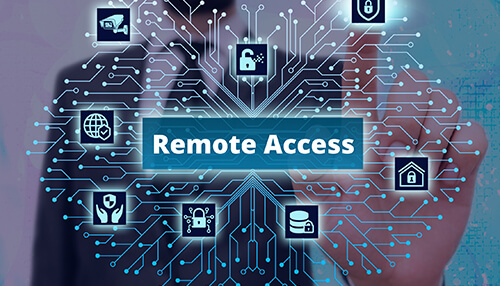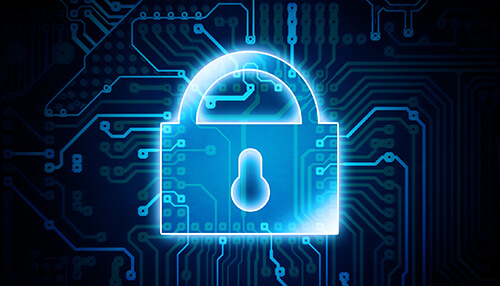Today, the greatest advantages of the development of technology are seen in the business field. Many businesses have switched to remote and hybrid working systems to streamline and grow their businesses. However, aside from the advantages of these working systems, the most concerning issue for business owners is security, according to research. Such concerns and potentially dangerous situations have made enterprises secure remote access solutions essential to accessing devices and data.
In 2021 employees downloading risky programs was the main issue with hybrid workplaces. In addition, 30% of respondents expressed concern over employees using work devices to access their personal email accounts.
When working remotely, you may not know where to start to ensure security when accessing your data remotely. Although providing secure remote access can seem like a complicated and difficult process, with just a few steps, you can easily ensure the security of both your business and your data in remote access through the right security solutions.
What Are The 5 Steps When Securing Remote Access?
We all know the fact that businesses are shifting to remote and hybrid working nowadays. While conducting business operations remotely with digital support is very advantageous, it can reveal some security risks. These risks can cause security vulnerabilities and lead to huge losses such as data leakage.
In order to minimize all risks, it is necessary to take some steps to keep remote access secure. Thanks to these steps, your network, data, and resources are securely protected. Here are 5 steps you should take while keeping remote access safe.
Employ strong encryption
Today businesses hold their data in the cloud. It could be risky if necessary security measures are not taken because they are not physically protected where they are kept. At this point, a strong encryption system, which is the most effective way to protect your data, is what you need.
Encryption plays an important role in protecting your remote workers, data, and network, adding an extra layer of security when necessary. When necessary, it detects and defends unauthorized access activities. End-to-end encryption is one of the strongest encryption methods as it keeps both endpoints secure.
Limit the privileges of users
If you give the same privileges to each of your users, it may cause data leakages. By giving your employees standard privileges and priorities and only giving superior privileges to the necessary employees to perform administrative operations, you will make a huge contribution to minimizing security vulnerabilities.
In addition, you should keep track of which people in your team have what authority and privileges. You can also give or take away these access privileges when necessary. In short, applying a limitation is a very effective solution to prevent data leakage. The principle of least privilege dramatically reduces the possibility of serious security breaches.
Apply user authentication
Authentication is the most basic and most effective method used to control login or access requests. In Authentication, users’ credentials and passwords are required to gain access to the network and data. You can increase your security when working remotely by demanding two requirements, especially with two-factor authentication acting as an extra layer of protection.
In order to prevent the activities of malicious actors, two-factor authentication requests passwords and their own identity information from users, which are sent via email or SMS to their mobile phones. In this way, only the right people will have access to permission.
Create cybersecurity policies
In order to protect company data, you need to produce clear security policies for your remote workers and implement them in the letter. With a security policy that stipulates appropriate guidelines, you protect the company’s devices, third-party vendors, hard drives, shared accounts, mobile devices, and network borders that you entrust to your employees.
In this way, general security is ensured. In no case should these policies be loose or abused. Otherwise, external or internal attacks may occur. Data protection, sign-on portals, backup, access, storage, and general security policies should be prepared in the most proper way and implemented without defects.
Train your team for cybersecurity
In risky situations of network security, your internal personnel is the first to interfere. You may have negligent employees inside, so you should thoroughly inform them about your cybersecurity culture. You should be aware of the penalties and losses that may result from possible risks. The best way to do this is to provide security training.
You should give information about the protocols by providing security training regularly. This protects not only your network, but also your devices, resources, employee data, and sensitive information. In short, you should train your staff to avoid not specifically requested activities.
Conclusion
Since we are now living in a digitalized world, and especially thanks to the convenience that digitalization brings to our lives, time and effort are saved in operations performed in the business world. While the advantages of working remotely are many, there are also security risks as there is no physical protection.
The most important thing to ensure in remote working is security. Your data, confidential information, network, and, in general, your business need to be completely secure. Adapting a security solution also provides security to the devices you use, and moreover. Thanks to the security solution you will cooperate with, you leave behind the troublesome processes of ensuring security.



